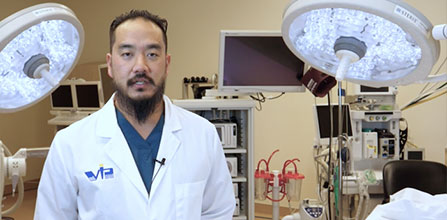Minimizing Excess Skin after Bariatric Surgery
Excess skin is a common, almost unavoidable, part of the post-bariatric surgery lifestyle. Sagging or excess skin is caused by one of any number of issues including genetics, the amount of weight lost, age, and the specific procedure being performed. But that stretched skin does not have to be a drag on your life.
Some patients consider their excess skin to be a trophy of the amazing achievements they’ve made through the weight loss surgery process. Contrary to what some might say, weight loss surgery is not the easy way out. Quite the opposite. Patients must still work hard at changing their diet and exercise and improving their overall lifestyle. Further, great results are not guaranteed and largely depend on the patient’s willingness and ability to live this new lifestyle day in and day out.

So, what can we do to manage or prevent excess skin after bariatric surgery?
- First, we must remember that there is a genetic component to how much excess skin you will have after surgery. This is a non-changeable reality that you may have to live with – and it’s OK! Genetics play a big role in many of the conditions we experience throughout our lives and we must make the most of it
- Age is also a concern when evaluating if excess skin might be an issue. As we age, our skin’s elasticity is reduced. Excess weight and obesity will have stretched the skin significantly, and for some, the skin will recover more easily than for others
- The procedure you undergo will also make a big difference. Procedures like the gastric bypass, which afford very rapid weight loss in the early postoperative period, are more likely to cause excess skin than, for example, the gastric sleeve, which might have slower initial weight loss, but comparable results after three or five years
- Lastly, is the amount of weight that you ultimately lose. The more weight you have to lose, the more your skin will have been stretched before surgery. This, of course, will vary based on body style and size, but, greater weight loss means a higher chance of excess skin
So, knowing this, what can we do?
While excess skin may not be avoidable, there’s quite a bit we can do to minimize its occurrence or manage it effectively.
- First, is to follow your postoperative diet and lifestyle plan very carefully. Not only does that mean restricting your calories appropriately, but also not overdoing it. It may be tempting, especially in the early postoperative period, to try to lose extra weight above the 1 to 2 pounds per week that we recommend. If this happens naturally following the postoperative lifestyle, that’s great. But pushing harder to lose more weight is not a good idea. Not to mention you will increase the risk of developing excess skin
- Second, prioritize food and drink that both conform to your diet, and also provide for better skin elasticity. To begin, you need to stay well hydrated. Hydrated skin is more elastic and will be better able to manage the changes in your body weight. Then, eat plenty of healthy fatty foods like avocado and salmon, which contain skin-elasticity-promoting properties that can help your skin heal naturally.
- There are several over-the-counter and prescription creams that can help with aesthetics after your procedure. Some products, such as body butter, are great for moisturizing the skin, while other products claim to reduce visible stretch marks. No matter what you use, it is important to speak to your surgeon to make sure that a) it is OK for you after surgery and b) that is not a waste of money.
- Build muscle! Building muscle not only helps you maintain great weight-loss results, but it also helps fill out some of the skin that may be sagging. You don’t have to become a bodybuilder, but regular strength training exercises can do wonders for the shape of your body, as well as the appearance of your excess skin.
Last, but not least, is surgical intervention. This is especially appropriate for those who are having trouble, usually in the form of pain or irritation, due to their excess skin. Known as a panniculectomy, the removal of excess skin is performed most often in the abdominal area. The majority of the time a panniculectomy can be covered by insurance when medically indicated.
Ultimately, whether you decide to keep your excess skin as a trophy, or have it removed never to be seen again, there are options for you. Most importantly, we want you to be safe and healthy, and we ask that you speak to Dr. Tsuda when deciding what to do with your excess skin.



